A Glimpse into Moroccan Gastronomy
Moroccan culinary tour, celebrated for its rich tapestry of flavors and enticing aromas, is a harmonious blend of diverse culinary traditions shaped by centuries of historical and cultural interplay. The vibrant colors and aromatic spices encapsulate the nation’s unique gastronomic identity, where influences from Arab, Berber, and Mediterranean cuisines converge to create a truly enchanting culinary experience.
Tagines: The Heart of Moroccan Cuisine

Tagines, traditional slow-cooked stews originating from Morocco, derive their name from the distinctive earthenware pot they’re prepared in. These culinary gems, essential to Moroccan dining, expertly meld succulent meats or vibrant vegetables with an exquisite blend of aromatic spices. The result is a harmonious explosion of flavors that tantalizes the taste buds, showcasing the rich and diverse culinary heritage of Morocco.
Couscous: The Versatile Grain

Couscous, a versatile culinary cornerstone crafted from tiny semolina grains, emerges as a canvas of infinite possibilities. This staple dish transforms into a delectable foundation for robust vegetable or meat stews, elevated by a symphony of aromatic spices. Adorned with dried fruits and nuts, each forkful offers a harmonious blend of textures and flavors, transcending the mundane to create a culinary masterpiece that satisfies both palate and appetite.
Pastilla: A Culinary Masterpiece

Pastilla, a delectable Moroccan dish, is a harmonious fusion of savory and sweet elements. This culinary masterpiece features delicate layers of thin pastry cradling a sumptuous filling of either pigeon or chicken, harmoniously mingled with almonds, aromatic spices, and a subtle dusting of powdered sugar. The result is a culinary symphony that tantalizes the taste buds with a perfect balance of textures and flavors, showcasing the rich and intricate tapestry of Moroccan gastronomy.
Harira: The Comforting Soup

Harira, a cherished Moroccan soup deeply ingrained in Ramadan traditions, is a soul-warming delicacy. This time-honored dish melds the rich flavors of tomatoes, lentils, and chickpeas with a symphony of aromatic spices, including the subtle warmth of cinnamon and the zing of ginger. Beyond its culinary appeal, Harira is a symbol of nourishment and communal spirit during the holy month, providing both sustenance and a sensory journey that epitomizes the cultural richness of Moroccan cuisine.
Moroccan Mint Tea: A Symbol of Hospitality
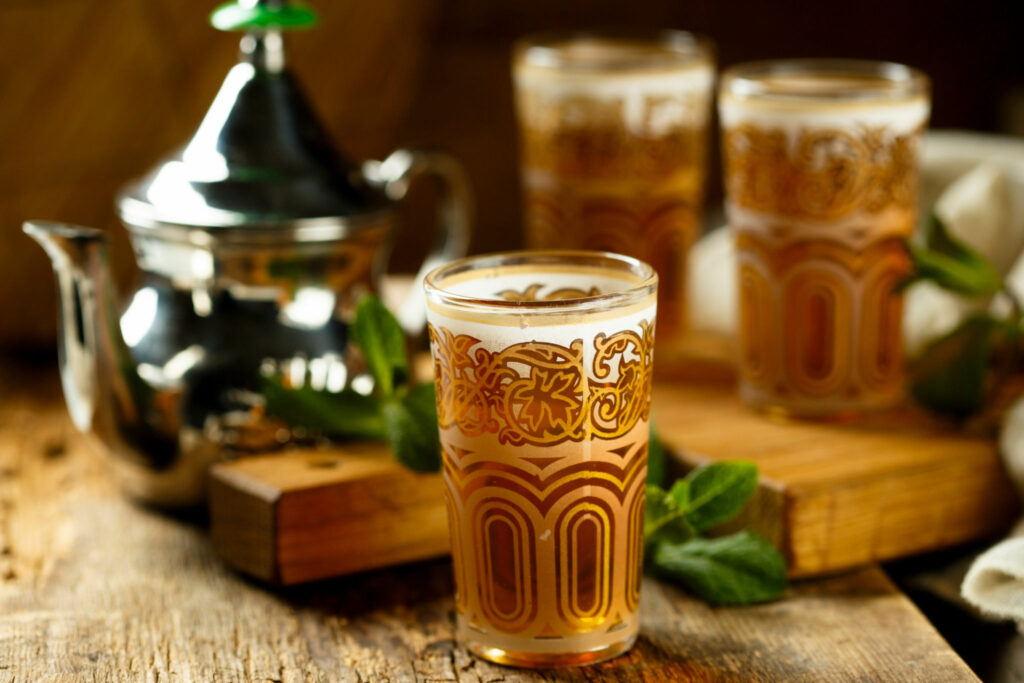
Indulging in the rich tapestry of Moroccan cuisine is an immersive experience heightened by the ritual of savoring mint tea. This iconic beverage transcends its role as a mere drink, seamlessly weaving itself into the cultural fabric as a symbol of warm hospitality and genuine friendship. The harmonious fusion of green tea, fragrant mint leaves, and a touch of sweetness creates a refreshing elixir that encapsulates the essence of Moroccan traditions, inviting both locals and visitors alike to partake in a ritual that goes beyond the palate, fostering connections and shared moments of conviviality.
Mechoui: Grilled to Perfection
Mechoui, an exquisite culinary experience, features succulent lamb slow-roasted over an open fire, elevating it to a gastronomic delight typically reserved for special celebrations. The meticulous roasting process imparts tenderness and flavor, creating a perfect harmony of juicy meat and crispy skin. This traditional North African dish encapsulates the spirit of festivities, making it a cherished centerpiece that transcends mere sustenance, embodying the joyous essence of communal gatherings and shared moments.
Zaalouk and Briouats: Appetizing Accompaniments
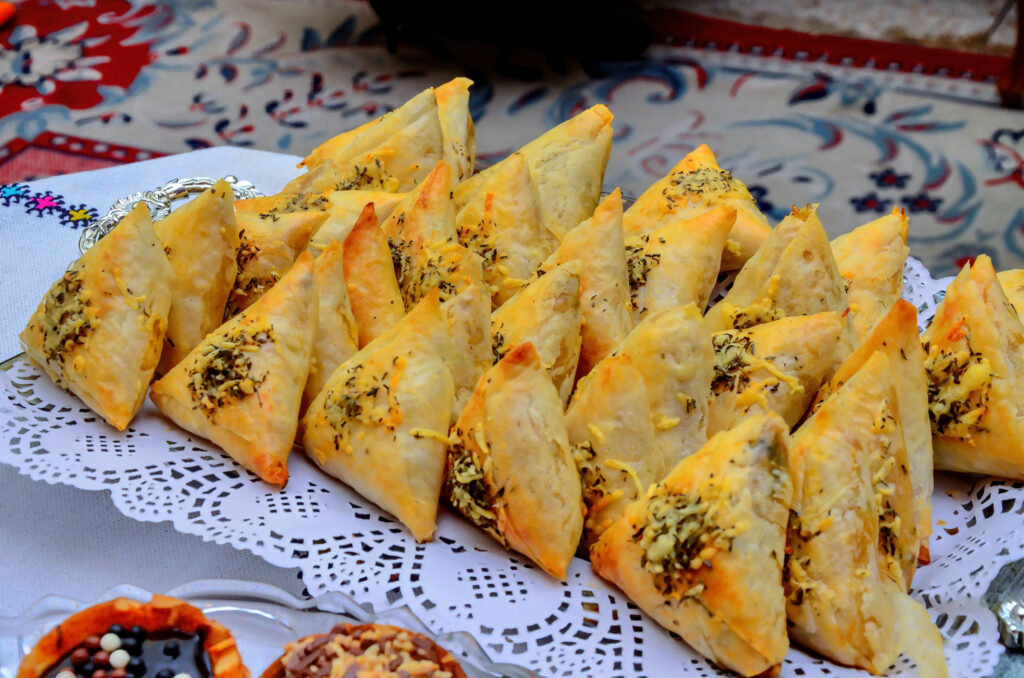
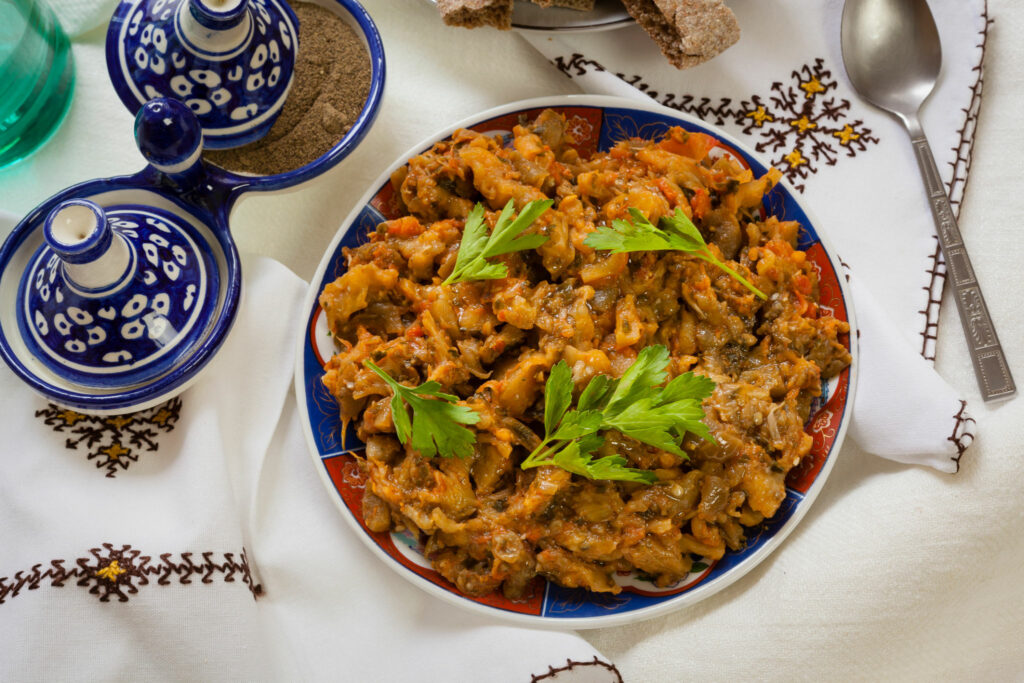
Zaalouk, a delectable Moroccan dish, features a rich blend of roasted eggplant and tomatoes, seasoned with aromatic spices. This flavorful eggplant and tomato salad serves as a vibrant and savory accompaniment to main courses. Briouats, on the other hand, are exquisite pastry parcels originating from North Africa. Filled with a variety of savory or sweet fillings, such as spiced meat or almonds, these delicate parcels add a delightful touch to any meal. Together, Zaalouk and Briouats contribute to a diverse and flavorful culinary experience, enhancing the overall enjoyment of Moroccan cuisine.
Bread: Khobz and Msemen
Moroccan culinary tradition boasts a rich variety of bread, with two notable staples being Khobz, a circular and crusty bread, and Msemen, a layered, pan-fried delicacy. These breads play a vital role in Moroccan meals, offering a delightful accompaniment for savoring flavorful sauces. Khobz’s round and hearty texture complements the dining experience, while Msemen’s unique preparation, involving pan-frying and layering, adds an enticing touch to the diverse tapestry of Moroccan cuisine, making every meal a delightful exploration of taste and texture.
Seafood Delicacies: Coastal Treasures
Along the picturesque coastal regions of Morocco, a culinary symphony unfolds with seafood as its star performer. The tantalizing aroma of grilled sardines mingles with the rich flavors of fish tagines and seafood pastillas, creating a sensory tapestry that captures the essence of Morocco’s coastal bounty. Each dish tells a story of tradition and innovation, showcasing the remarkable diversity that defines Moroccan cuisine. From the sizzle of the grill to the intricate spices, every element harmonizes to celebrate the coastal treasures and leave an indelible mark on the taste buds of those fortunate enough to partake in this gastronomic journey.
Sweets and Desserts: A Sweet Finale
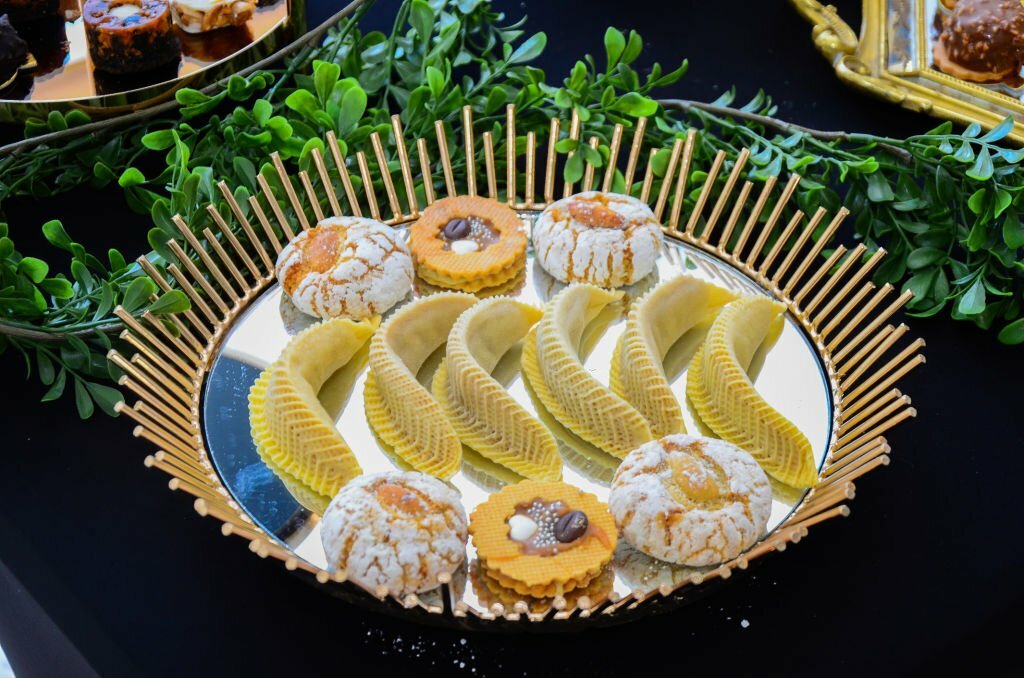
Indulge in the exquisite world of Moroccan desserts, where the richness of honey-drenched pastries, exemplified by the iconic Baklava, harmonizes with the intricate flavors of sesame-seed coated Chebakia. Each delectable bite not only tantalizes the taste buds but also encapsulates a celebration of time-honored tradition and culinary artistry. These sweet delights are a testament to Morocco’s culinary prowess, weaving a tapestry of flavors that transport you to the heart of a vibrant and delicious cultural heritage.
Experience the Richness of Morocco’s Culinary Tapestry
Embarking on a culinary journey through Morocco unveils not just a diverse array of dishes but a cultural experience steeped in tradition, hospitality, and an unyielding passion for flavors. From the streets adorned with sizzling delicacies to the refined elegance of dining spaces, Morocco’s cuisine is a treasure trove waiting to be savored.
FAQs
- Q: What are the must-try dishes in Moroccan cuisine? A: Some iconic dishes include tagines (slow-cooked stews), couscous (semolina grains often served with flavorful stews), pastilla (a savory-sweet pastry), and harira (a comforting soup).
- Q: Is Moroccan food very spicy? A: While Moroccan cuisine uses a variety of spices, it’s not always extremely spicy. The focus is more on a rich blend of flavors rather than intense heat.
- Q: Are there vegetarian options in Moroccan cuisine? A: Absolutely! Moroccan cuisine offers a wide range of delicious vegetarian dishes, from vegetable tagines to stuffed pastries and salads.
- Q: What makes Moroccan mint tea so special? A: Moroccan mint tea is known for its refreshing taste and is often served with a balance of green tea, fresh mint leaves, and sugar. It’s a symbol of hospitality and friendship in Moroccan culture.



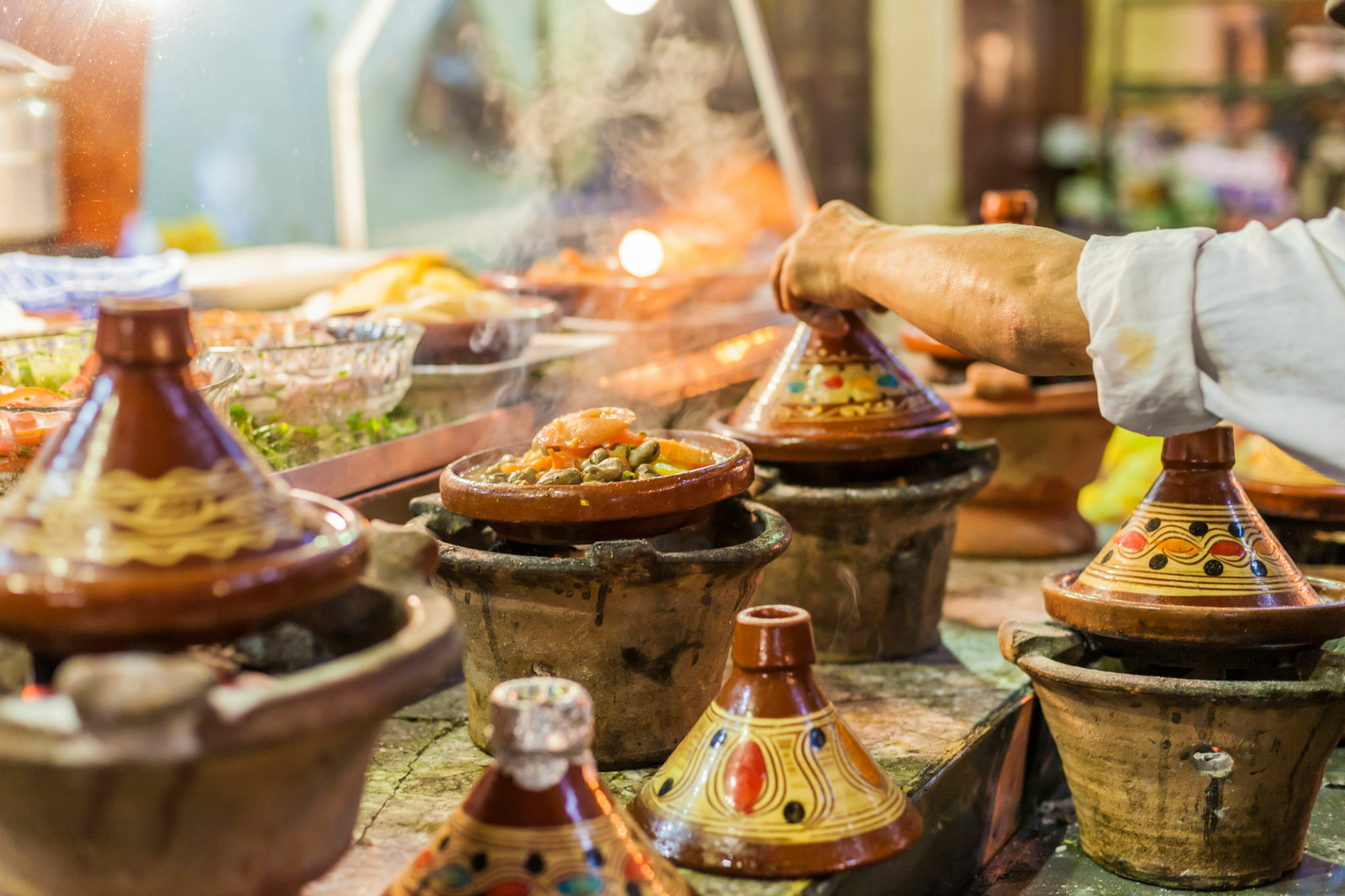
[…] Moroccan cuisine is not just about tantalizing taste buds but also about cultural immersion, with breakfast being a significant aspect. Let’s delve into the delightful world of traditional Moroccan breakfasts and uncover the best spots to relish these authentic flavors. […]